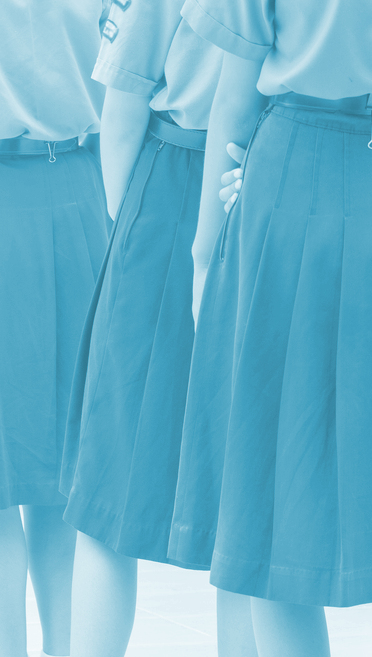Uniforms drive dropouts
 New research shows gendered school sport uniforms play a “major role” in high drop-out rates of teenage girls in sport.
New research shows gendered school sport uniforms play a “major role” in high drop-out rates of teenage girls in sport.
The study looked at a range of women across the UK aged 18 and over, found 70 per cent reported incidents of girls dropping sport at school due to clothing and related body image concerns.
The research was led by England Hockey star, Tess Howard whose strike secured the country’s first-ever Commonwealth Games hockey gold medal, in a 2-1 win against Australia, last year.
Her early promotion of her dissertation paper within hockey circles has already led to new inclusive playing kit regulations being launched at the start of England Hockey’s domestic league 2022/23.
Howard says she is now on a mission to change the face of hockey internationally, enabling choice for athletes to wear shorts or skorts. Long term, she aims to tackle the issue of gendered uniform across all sport.
“It’s all about choice; choice is being rigorously inclusive,” she says.
“My dream is to go to the Olympics, but my dream is also an Olympics with the option to wear shorts or skorts. That is a powerful statement of inclusion, belonging and evolution in women’s sport.
“No person should be put off participating in any sport based purely on what the uniform requires them to wear. We must put the purpose of sport first and enable individuals to enjoy being active for all the clear benefits.
“If people want to wear shorts or leggings playing basketball or tennis or gymnastics it does not matter.
“The findings I discovered, in terms of the number of girls this is putting off sport, is truly alarming. It's the most underrated cause of low female sport numbers.”
The legacy of gendered and sexualised uniforms is historic, dating back to Victorian times when women and girls in sport had to find ways to emphasise their femininity to be accepted in a masculine world - whether through playing tennis, cricket and hockey in long skirts or sexualisation of beach volleyball and gymnastics uniforms. The legacy still exists.
“My research shows it taints a view of women’s sport from a very young age, and it puts focus on what girls’ bodies look like, rather than what they can do on the sports field or in the gym,” Ms Howard says.
“Women’s sport is on the rise - we are so proud of our successful female sporting teams; but think of all the girls we have lost to kit problems. It’s not a girl-issue, it’s systemic in society and it’s a simple fix: choice.”
She carried out an extensive analytical online survey, promoted through social media, which 404 women across the UK completed. This was followed-up by eight interviews with a selection of those who had most recently left school.
The findings demonstrate participation and enjoyment of sport was severely impacted by uniform. In total, three-quarters of survey respondents replied ‘often’, ‘many’ and ‘sometimes’, when asked if participants ever saw girls stop playing sport because of sports kit or body image concerns.
But also, the results of the paper showed:
-
many women felt sexualised by what they are being forced to wear in sport, contributing to the internalisation of the unattainable ‘feminine body ideal’.
-
gendered uniforms “influence the development of a fear of ‘masculinisation’ and ‘butch/lesbian’ perceptions in sport, and signal the ways uniform can contribute to harmful athletic-feminine identity tensions in teenage girls”.
-
gender-split uniforms create behavioural gender role stereotypes, and “undoing cis-normative clothing practices could foster a more inclusive space for all”, especially gender diverse students.
-
creating choice is also about supporting physical sporting performance







 Print
Print